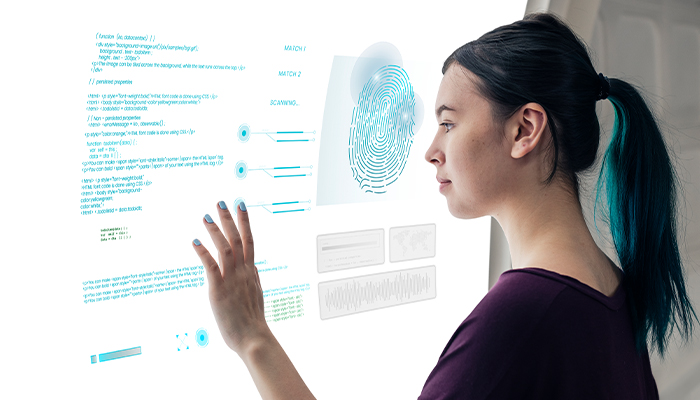AI in Incident Response: Exploring Use Cases, Solutions, and Benefits

JUN, 21, 2024 17:25 PM
AI in Incident Response: Exploring Use Cases, Solutions, and Benefits
In the digital landscape, organizations face a multitude of threats, ranging from cyberattacks to system failures. The ability to respond swiftly and effectively to these incidents is crucial for mitigating damages and maintaining operational integrity. Traditional incident response methods, although effective to some extent, often struggle to keep pace with the evolving nature of threats. This is where artificial intelligence (AI) steps in, offering a paradigm shift in incident response capabilities. In this comprehensive guide, we will delve into the realm of AI in incident response, exploring its use cases, solutions, and the myriad benefits it brings to organizations.
What is an AI-powered incident response?
AI-powered incident response refers to the utilization of artificial intelligenceand machine learning algorithms to detect, analyze, and respond to security incidents in real time. Unlike conventional methods that rely heavily on manual intervention and predefined rules, AI-driven incident response systems leverage advanced algorithms to autonomously identify threats, predict potential risks, and execute appropriate responses. These systems are designed to continuously learn from past incidents and adapt to new and emerging threats, thereby enhancing the overall efficacy of incident management processes.
Use Cases of AI in Incident Response
- Threat Detection and Analysis: One of the primary use cases of AI in incident response is threat detection and analysis. AI-powered systems can sift through vast amounts of data collected from various sources, including network logs, endpoint devices, and cloud environments, to identify anomalous behavior indicative of a potential security breach. By analyzing patterns and correlating disparate data points, AI algorithms can accurately pinpoint security threats in real-time, enabling proactive intervention before significant damage occurs.
- Malware Detection and Remediation: Malicious software, such as viruses, worms, and ransomware, poses a significant threat to organizational security. AI-based malware detection solutions employ machine learningmodels trained on extensive datasets of known malware samples to identify and neutralize suspicious files and processes. These systems can detect both known and previously unseen malware variants, thereby providing comprehensive protection against evolving threats.
- Incident Triage and Prioritization: In the event of a security incident, organizations often face the challenge of triaging and prioritizing alerts based on their severity and potential impact. AI-driven incident response platforms utilize intelligent algorithms to automatically categorize alerts according to predefined criteria, such as threat severity, asset criticality, and regulatory compliance requirements. By prioritizing high-risk incidents and reducing false positives, AI helps security teams focus their efforts on the most pressing threats, thereby improving response times and overall effectiveness.
- Predictive Analytics and Threat Intelligence: AI-powered incident response systems can leverage predictive analytics and threat intelligence to anticipate and pre-emptively mitigate security threats. By analyzing historical data, contextual information, and emerging trends, these systems can forecast potential security risks and recommend proactive measures to mitigate them. Moreover, AI algorithms can continuously monitor external threat feeds and industry reports to stay abreast of the latest threats and vulnerabilities, enabling organizations to adapt their defenset strategies accordingly.
- Automated Incident Response Orchestration: Manual incident response processes are often time-consuming and prone to human error. AI-driven orchestration and automation platforms streamline incident response workflows by automating repetitive tasks and standardizing response procedures. These platforms can automatically trigger predefined response actions, such as isolating compromised endpoints, blocking malicious IP addresses, and quarantining infected files, thereby minimizing the time to detect and remediate security incidents.
Solutions and Technologies in AI-Powered Incident Response

- Security Information and Event Management (SIEM) Systems: SIEM platforms form the cornerstone of AI-powered incident response by aggregating and correlating security event data from disparate sources, such as network devices, servers, and applications. AI-enhanced SIEM solutions leverage machine learning algorithms to analyze event logs in real-time, detect anomalous behavior, and generate actionable alerts for security teams. By centralizing log management and threat detection capabilities, SIEM systems provide organizations with a unified view of their security posture and enable proactive incident response.
- Endpoint Detection and Response (EDR) Solutions: Endpoint Detection and Response (EDR) solutions focus on protecting individual endpoints, such as desktops, laptops, and mobile devices, from advanced threats. AI-powered EDR platforms utilize behavioral analysis and machine learningtechniques to detect and respond to suspicious activities at the endpoint level. These solutions can identify indicators of compromise (IOCs), conduct forensic investigations, and facilitate rapid incident containment and remediation. By providing granular visibility into endpoint activities, EDR solutions strengthen the overall security posture of organizations and enhance incident response capabilities.
- Threat Intelligence Platforms (TIPs): Threat Intelligence Platforms (TIPs) play a crucial role in AI-powered incident response by aggregating, analyzing, and disseminating threat intelligence data from various internal and external sources. AI-driven TIPs leverage machine learningalgorithms to enrich raw threat data with contextual information, such as attacker tactics, techniques, and procedures (TTPs), and prioritize alerts based on their relevance and severity. By empowering security teams with actionable threat intelligence, TIPs enable organizations to proactively identify and mitigate security threats before they escalate into full-blown incidents.
- Security Orchestration, Automation, and Response (SOAR) Platforms:Security Orchestration, Automation, and Response (SOAR) platforms integrate AI-driven orchestration and automation capabilities with incident response workflows to streamline security operations. These platforms enable organizations to create customizable playbooks that define automated response actions for specific types of security incidents. By orchestrating cross-functional collaboration and automating routine tasks, SOAR platforms accelerate incident detection, containment, and remediation, thereby enhancing the overall efficiency and effectiveness of incident response processes.
Benefits of AI-Powered Incident Response
- Improved Threat Detection and Response Times: AI-powered incident response enables organizations to detect and respond to security threats more rapidly and accurately than traditional methods. By leveraging advanced analytics and automation, AI systems can sift through vast amounts of data, identify anomalous behavior, and generate actionable insights in real-time, thereby reducing the time to detect and remediate security incidents.
- Enhanced Accuracy and Efficacy: AI-driven incident response solutions offer higher accuracy and efficacy compared to manual processes by minimizing human error and false positives. Machine learning algorithms can analyzing human error and false positives large datasets and complex patterns to identify subtle indicators of compromise that may elude human analysts, thereby improving the overall effectiveness of threat detection and response efforts.
- Scalability and Adaptability: AI-powered incident response solutions are highly scalable and adaptable, allowing organizations to handle large volumes of security events and adapt to evolving threats. Unlike manual processes that are constrained by human resource limitations, AI systems can automatically scale to accommodate growing workloads and dynamically adjust their detection algorithms to counter new and emerging threats.
- Proactive Threat Mitigation: By leveraging predictive analytics and threat intelligence, AI-powered incident response enables organizations to anticipate and pre-emptively mitigate security threats before they escalate into full-blown incidents. By proactively identifying vulnerabilities and recommending remedial actions, AI systems help organizations stay one step ahead of cyber adversaries and minimize the potential impact of security breaches.
- Cost Savings and Operational Efficiency: AI-driven incident response solutions help organizations streamline security operations, reduce manual effort, and lower operational costs. By automating routine tasks, such as incident triage, analysis, and response orchestration, AI systems free up valuable human resources to focus on more strategic initiatives, thereby improving overall operational efficiency and cost-effectiveness.
Conclusion
AI-powered incident response represents a paradigm shift in cybersecurity, offering organizations a proactive and adaptive approach to detecting, analyzing, and mitigating security threats. By leveraging advanced analytics, automation, and machine learning, AI systems empower organizations to respond swiftly and effectively to security incidents, thereby minimizing the potential impact on business operations and safeguarding sensitive data assets. As the threat landscape continues to evolve, AI-driven incident response will play an increasingly critical role in helping organizations stay ahead of cyber adversaries and ensure the resilience and integrity of their digital infrastructure.
FAQs: AI in incident response
Q1. What is AI-powered incident response, and how does it differ from traditional methods?
A1. AI-powered incident response involves the utilization of artificial intelligence(AI) and machine learning(ML) algorithms to enhance the efficiency, accuracy, and speed of incident detection, analysis, and resolution processes within cybersecurity frameworks. Unlike traditional methods that rely on manual intervention and predefined rules, AI-driven solutions autonomously identify anomalies, detect threats in real-time, and respond swiftly to security incidents by leveraging advanced algorithms and predictive analytics.
Q2. What are some key components of AI in incident response?
A2. Key components of AI in incident response include advanced threat detection, behavioral analysis, automated incident response, and predictive analytics. AI algorithms excel at detecting subtle deviations from normal patterns, analyzing user behavior, network traffic, and system activities, automating routine tasks such as threat containment and patch management, and forecasting potential security threats based on historical data and predictive modeling techniques.
Q3. What are some common use cases of AI in incident response?
A3.Common use cases of AI in incident response include threat hunting and intelligence gathering, malware detection and analysis, anomaly detection and intrusion prevention, incident response orchestration, fraud detection, and financial crime prevention. AI-driven solutions enable organizations to proactively identify emerging threats, neutralize malware variants in real-time, detect suspicious behaviors indicative of unauthorized access attempts, streamline incident response workflows, and detect fraudulent activities and money laundering schemes.
Q4. What solutions and technologies are available for implementing AI in incident response?
A4. Solutions and technologies for implementing AI in incident response include Security Information and Event Management (SIEM), Endpoint Detection and Response (EDR), Network Traffic Analysis (NTA), and User and Entity Behavior Analytics (UEBA) platforms. These AI-powered solutions provide real-time visibility into security events, endpoint activities, network traffic patterns, and user behaviors, enabling organizations to detect, investigate, and respond to security incidents rapidly and effectively.




Strategy
Design
Blockchain Solution
Development
Contact US!
USA 
1968 S. Coast Hwy, Laguna Beach, CA 92651, United States
Copyright © 2025 PerfectionGeeks Technologies | All Rights Reserved | Policy



